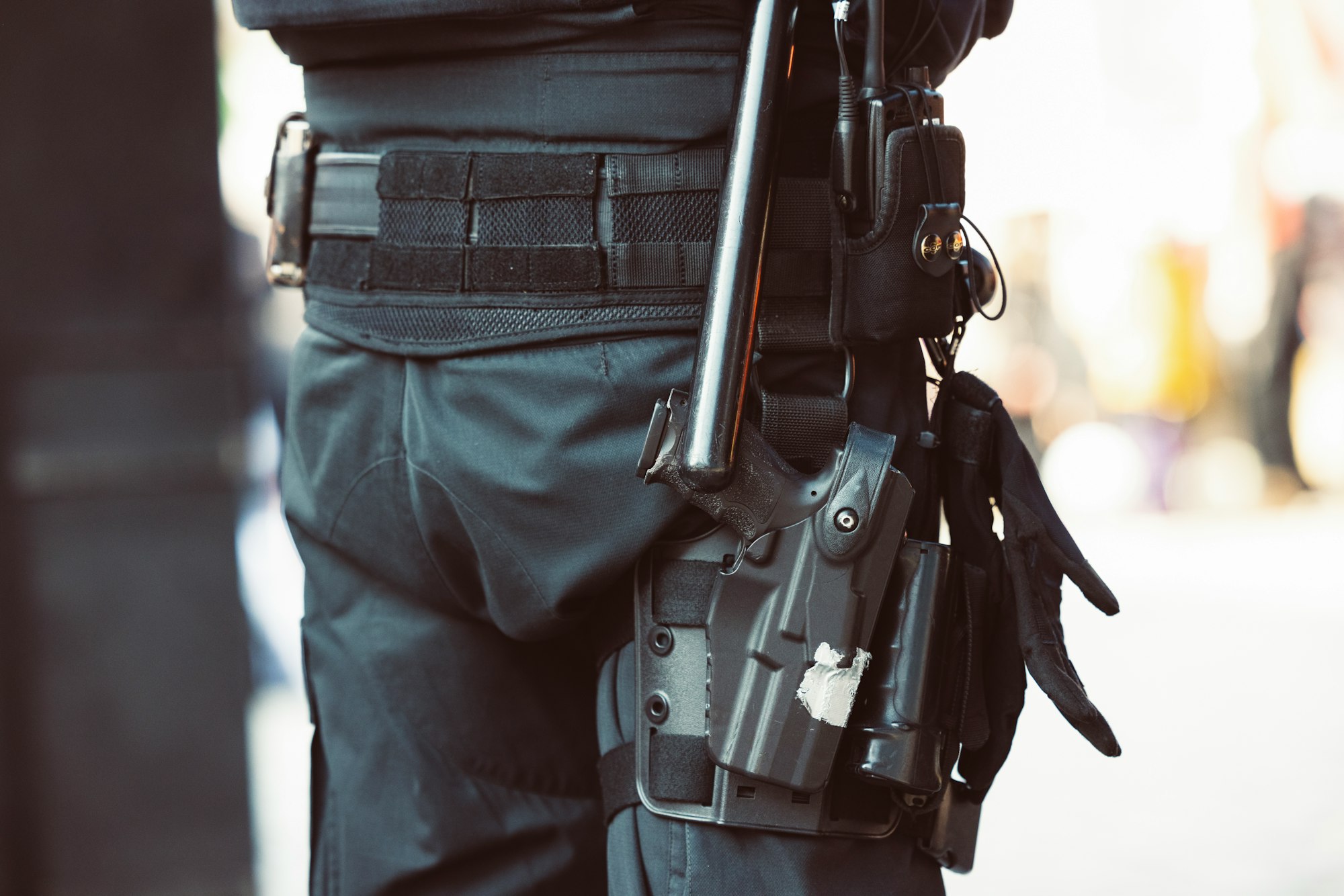Self-defense is a fundamental right, and in today's world, it's more important than ever to know your options. When it comes to non-lethal self-defense tools, two of the most commonly discussed are stun guns and tasers.
Although these terms are often used interchangeably, they refer to different devices with unique mechanisms and applications.
This article will delve into the key differences between stun guns and tasers, their legalities, and how they can be used for personal safety.
Key Takeaways:
- Understand the major differences between stun guns and tasers.
- Learn about the legal considerations surrounding stun gun laws and Taser devices.
- Discover practical self-defense applications for both stun guns and tasers.
What is a Stun Gun?
A stun gun is a handheld device designed to incapacitate an attacker by delivering a high-voltage, low-amperage electrical charge directly to the body. Unlike tasers, stun guns require direct contact with the target to be effective.
They disrupt the electrical signals within the muscles, causing temporary pain and muscle dysfunction, which can provide the user with a crucial window to escape.
Stun guns work by using a power source, typically batteries, to generate electricity. When the trigger is pulled, the electrical charge is released through two prongs at the end of the device.
The proximity required for a stun gun to be effective means that you must be within arm's reach of the attacker, which can be a significant consideration when choosing a self-defense tool.
Taser Devices Explained
Tasers, on the other hand, are energy weapons that can be used from a safe distance. They shoot two small dart-like electrodes, which are connected to the main unit by conductive wires, up to a range of about 15 to 30 feet.
When the taser cartridge is deployed, it delivers an electrical current that overrides the central nervous system, causing involuntary muscle contractions and immediate incapacitation.
The advantage of Taser devices is that they allow you to maintain as much distance as possible from an attacker, reducing the risk of harm. Law enforcement agencies often use Tasers for this reason, as they can subdue violent attackers without causing permanent injury.
Tasers are also equipped with a direct contact stun option, providing an additional layer of defense if needed.
Legal Considerations
When discussing stun gun vs taser, it's crucial to consider local laws. Stun gun laws vary widely from state to state, and in some places like Rhode Island, they may be completely illegal for civilian use.
Taser devices also have legal restrictions, and in some areas, they are classified in the same category as firearms.
Before you decide to carry a stun device or a taser, it's imperative to research and understand the local laws in your area. Violating these laws can lead to serious consequences, including fines and imprisonment. Always ensure that you comply with the law when choosing self-defense weapons.
Stun Gun vs Taser
How Stun Guns Work
Stun guns work by delivering a high-voltage shock to the attacker's body. This shock is about the size of a cellphone and is designed to temporarily disable an assailant without causing serious injury.
The electrical charge affects the human body by disrupting the communication between the brain and the muscles, resulting in pain and potential disorientation.
The power source of a stun gun is crucial for its effectiveness. Most stun guns are powered by rechargeable batteries, which need to be maintained to ensure the device is ready when you need it. Regular testing and charging are essential to keep your stun gun in working order.
Taser Functionality and Range
Tasers have a distinct advantage over stun guns when it comes to range. The ability to shoot projectile prongs allows a user to engage an attacker from a distance, which is often safer than close contact.
The electrical currents delivered by a taser can penetrate clothing and are designed to work on the nervous system, making it a highly effective tool for self-defense.
The taser cartridge is a single-use component that needs to be replaced after each shot. This is an important consideration for those who choose to carry a Taser, as having spare cartridges is necessary for multiple encounters.
The range and effectiveness of a Taser make it a preferred choice for many looking for a non-lethal self-defense option.
Stun Gun Accessibility and Availability
When considering self-defense weapons, accessibility is a crucial factor. Stun guns are often lauded for their ease of availability. Unlike a firearm or a handgun, acquiring a stun gun typically involves less regulatory red tape.
This makes them a go-to option for many looking for non-lethal self-defense tools that can be kept within arm's reach. They can be purchased at various outlets, from sporting goods stores to online platforms, making them readily accessible to the average person seeking protection.
Moreover, the generic term 'stun gun' encompasses a range of products, which means that potential users have a variety of options to choose from based on their comfort and needs.
Whether it's a compact model that fits in a purse or a more robust design with additional features, there's a stun gun to suit different preferences and situations. This variety ensures that individuals can find a self-defense tool that aligns with their lifestyle and security concerns.
Taser Device Innovations and Developments
Taser devices have come a long way since their inception, with ongoing innovations enhancing their effectiveness as a self-defense tool.
Modern taser devices are equipped with features such as laser targeting and LED lighting, which aid in accurately deploying the device even under stressful conditions.
These advancements increase the likelihood of effectively neutralizing an attacker's body from a safe distance, without having to be within arm's reach, providing a significant tactical advantage.
In addition to technological advancements, taser devices have also seen developments in their design, making them more user-friendly and easier to carry.
Some models are now shaped to mimic the familiar form of a handgun, which can help users who are already trained in firearm use to transition smoothly to using a taser device.
This ergonomic approach not only improves handling but also aids in quick response during high-pressure self-defense scenarios, ensuring the user can act swiftly and efficiently.
Stun Gun vs Taser
Stun Gun Advantages
One of the main advantages of stun guns is their size and ease of carry. Most stun guns are compact and can easily fit into a purse or pocket, making them convenient for everyday carry. They are also generally less expensive than Tasers, making them a more accessible option for personal safety.
Another benefit of stun guns is that they do not require a cartridge or projectiles, which means there are no additional costs or components to replace after use. This makes stun guns a cost-effective and low-maintenance choice for those interested in self-defense tools.
Taser Benefits
Tasers offer the benefit of incapacitating an attacker from a distance, which can be a significant advantage in a dangerous situation.
The ability to keep an assailant at bay while you escape or call for help can be life-saving. Tasers are also widely recognized and trusted by law enforcement agencies, which speaks to their reliability and effectiveness.
Additionally, tasers often come with built-in features such as laser sights and LED flashlights, which can aid in aiming and disorienting an attacker. These added features can increase the chances of successfully defending oneself against a threat.
Self-Defense Scenarios
When considering stun gun vs taser for self-defense, it's helpful to imagine real-life scenarios. For instance, if you're in close quarters, such as an elevator or a crowded area, a stun gun may be more practical due to its immediate direct contact use.
However, if you're in an open space where maintaining distance is possible, a Taser could provide a safer option.
It's also important to consider your comfort level and ability to use the device under stress. Practicing with your chosen self-defense tool and understanding how it works can greatly improve your chances of effectively using it if the need arises.

Training and Preparedness
Regardless of whether you choose a stun gun or a taser, training and preparedness are key. Many manufacturers offer training cartridges for tasers, allowing users to practice without deploying the actual prongs. Similarly, familiarizing yourself with the operation of a stun gun is essential.
Taking self-defense classes can also enhance your ability to use these tools effectively. Learning the proper techniques and gaining confidence in your ability to defend yourself can make all the difference in a dangerous situation.
Other Self-Defense Options
While stun guns and tasers are popular choices, there are other self-defense options available, such as pepper spray. Pepper spray can be used from a distance and is effective in deterring an attacker without causing permanent harm. It's important to weigh the pros and cons of each option and consider carrying multiple self-defense tools for comprehensive protection.
Considerations for Civilians
Civilians looking to carry stun guns or tasers should consider their lifestyle, environment, and personal comfort with the device. It's also essential to stay informed about the local laws and regulations regarding the possession and use of these self-defense tools.
For those who are prohibited from carrying stun guns or tasers, or who prefer not to, there are alternative self-defense methods, such as self-defense classes, that can provide valuable skills for personal protection.

Summary
Stun guns and tasers are two distinct self-defense tools that offer different advantages and considerations. Understanding the major differences, legalities, and practical applications of each can help you make an informed decision about which is best for your personal safety needs.
Remember to prioritize training, legal compliance, and preparedness to ensure that you can effectively defend yourself if the situation arises.
FAQ's
Are stun guns and tasers legal to carry in all states?
No, gun laws and regulations for Taser devices vary by state and even by city. It's important to check the local laws in your area before purchasing or carrying these self-defense tools.
Can stun guns and tasers cause permanent damage?
Stun guns and tasers are designed as non-lethal self-defense weapons. They are intended to incapacitate an attacker temporarily without causing long-term harm. However, improper use can lead to injuries, so it's crucial to use these devices responsibly.
Do I need a permit to carry a stun gun or taser?
The requirement for a permit varies depending on where you live. Some states require a permit or background check to carry a Taser, while others may have no such requirements for stun guns. Always verify the requirements in your jurisdiction.
What is the difference between a stun gun and a taser?
A stun gun is a handheld self-defense device that requires direct contact to deliver an electric shock. In contrast, a taser can shoot electric probes attached to wires, allowing for remote use.
Which one is more effective, a stun gun or a taser?
The effectiveness of stun guns and tasers depends on the situation. Stun guns are suitable for close-range encounters, while tasers offer the advantage of incapacitating attackers from a distance.
Tasers and Stun gun laws?
The legality of owning and carrying stun guns and tasers varies by jurisdiction. It is essential to research and understand the laws in your specific area before purchasing or using these devices.












Member discussion